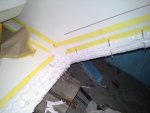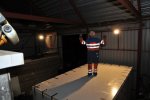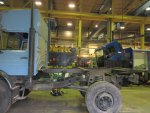Vegard_S
Adventurer
So we finally also started gluing the sandwich panels together. Started with the floor, front wall and the right wall. When the glue has hardened here, we will continue with the panels for the rear wall, then the left wall and finaly the roof. When all panels are in place we will ad angel profiles on both the outer and the inner edges for increased strength. Since it is becoming Autumn here in Norway now, with quite low temperatures during the night, the glue takes quite long time to dry. So the assembly process will propably take a week or two to finnish, but at least it's going in the right direction!





































